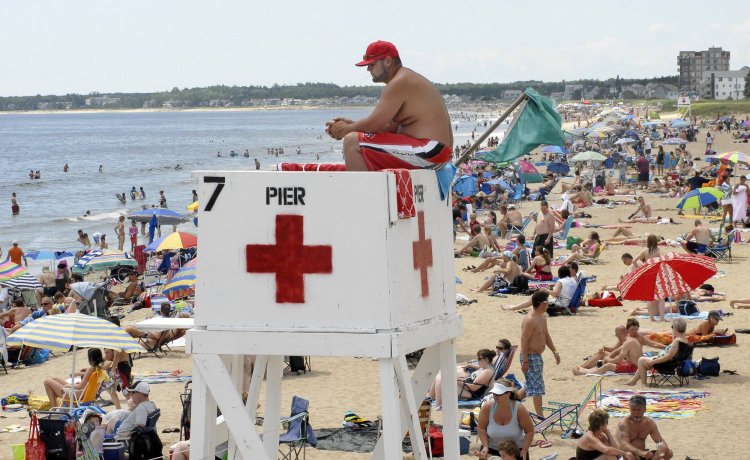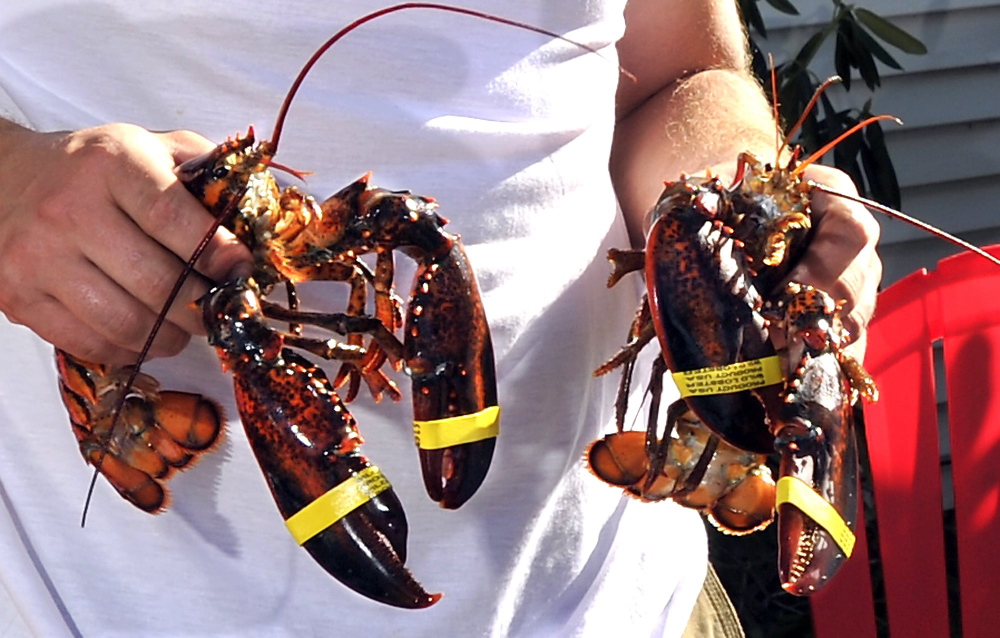BRUNSWICK — Mainers could see temperatures climb above 90 degrees for more than half the summer. The number of days with snow cover could be cut in half. And the lobster fishery could be decimated by warm-water predators.
Those are some of the gloomy scenarios presented during a daylong summit Friday measuring the impact of climate change on Maine’s economy if carbon dioxide emissions continue to grow at the current pace. Organized by Envision Maine, a nonprofit that explores the future of Maine’s economy, the event drew hundreds of people to Bowdoin College. More than 30 speakers – from academia, business and research – shared data, observations and thoughts about challenges and opportunities as Maine faces climate change.
Among them was Andy Pershing, chief science officer at the Gulf of Maine Research Institute. He said lobsters will be vulnerable on two fronts: Warmer water brings predators such as hake into the Gulf of Maine in greater numbers, and it makes lobsters susceptible to a disease that softens their shells – a condition that decimated Rhode Island’s lobster fishery.
He said the ecology of the Gulf of Maine will become similar to waters off New Jersey.
“If you like New Jersey, I guess you will like the future,” he said. “But I like Maine.”
If the world continues to emit high levels of carbon dioxide, Maine can expect temperatures above 90 degrees for more than half the summer, said Cameron Wake, a climatologist from the University of New Hampshire, whose modeling software forecast changes through the end of this century. If global carbon emissions are mitigated, Maine can expect 10-15 days per summer above 90 degrees, he said. Historically, Maine has had temperatures above 90 only five days a summer, according to Wake.
Likewise, the number of days in which Maine has snow cover, about 110 a year now, could decline to half that, wreaking havoc on winter industries.
People who work in the state’s forests also are seeing the effects of climate change, said Tom Doak, director of the Small Woodland Owners Association of Maine. Wet springs produce a fungus in white pines that makes them drop their needles every June. Once a rarity, the condition has been seen for several years in a row, he said.
Agriculture also is changing. Steve Getz works with the CROPP Co-op, a cooperative of 1,800 farmers nationally that sells under the Organic Valley brand. For the first time in its 26-year history, the organization has hired staff dedicated to studying climate and weather to help its members identify the most appropriate places for dairy farms.
He displayed a drought map showing heavy concentrations in California, a major hub of the U.S. dairy industry. That presents an opportunity for Maine farmers, he said.
“Maine has good grass, lots of water and lots of land,” he said. And easy access to the Interstate 95 corridor “where the market for organic and grass-fed products is very strong.”
Other presenters said Maine is in a good place to capitalize on its solar and wind resources, technologies that are becoming more affordable as energy options evolve. They encouraged people to advocate for renewable energy by influencing policy, but also by investing directly in companies that endorse renewable energy initiatives and not investing in companies connected with fossil fuels.
Dan Reicher, the morning keynote speaker, is executive director of the energy policy center at Stanford University and former director of climate change at Google. He applauded Maine’s efforts to develop sources of renewable energy and to embrace buying local as a way to reduce carbon emissions. “You are on the right track here in Maine, if you can just accelerate,” he said.
Send questions/comments to the editors.




Comments are no longer available on this story